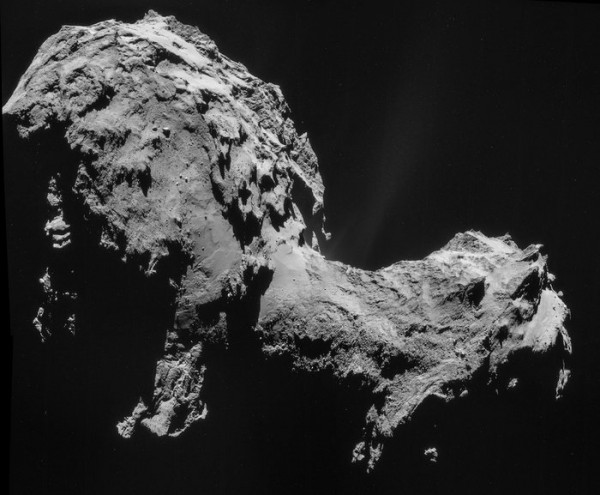By Ana Verayo, | September 22, 2016

Four-image NAVCAM mosaic of Comet 67P/Churyumov-Gerasimenko, using images taken on 19 September 2014 when Rosetta was 28.6 km from the comet.
The first-ever successful asteroid mission, the comet hunter Rosetta probe, will now be switched off as the mission comes to an end next week.
On September 29 or 30, the European Space Agency's (ESA) Rosetta spacecraft will fire Rosetta's engines for the last time as the probe begins a slow dive to the comet 67P Churyumov/Gerasimenko for a planned crash landing. At 20 kilometers per hour, the probe will end its mission on the comet that it has been following for almost two years.
Like Us on Facebook
According to ESA's Rosetta science operations manager, Laurence O'Rourke, Rosetta has delivered a treasure trove of planetary scientific data.
Among the data, the mission team detected complex organic molecules that are considered to be the building blocks of DNA, provided by the Rosetta probe and its doomed lander, Philae.
Shortly after arriving at comet 67P, Rosetta deployed its lander called Philae on the surface. However, the lander suffered from a bouncy landing and ended up under a cliff. The lander went into hibernation after 36 hours. However, the lander obtained crucial data during its short life.
The imagery and data from Rosetta will enable scientists to gain deeper understanding of the evolution of our solar system, as asteroids are considered to be ancient relics from the infant solar system.
O'Rourke revealed that Rosetta's solar cells are now decreasing in power. Rosetta was launched in 2004, and it arrived at the comet in August 2014.
During Rosetta's journey to comet 67P/Churyumov- Gerasimenko, mission operators were able to program the probe into a 31-month sleep to conserve energy.
Rosetta's final descent next week will take 10 hours. During that time, the probe will capture its last close-up photographs and analyze the comet dust.
The comet's final resting place is known as Ma'at. The surface of the Ma'at region is made from hard material, but its underlying material is thought to be soft.
O'Rourke said that Rosetta will not bounce off the surface but will slide, as its solar panels are expected to break away from its body along with its communications dish.
-
Use of Coronavirus Pandemic Drones Raises Privacy Concerns: Drones Spread Fear, Local Officials Say

-
Coronavirus Hampers The Delivery Of Lockheed Martin F-35 Stealth Fighters For 2020

-
Instagram Speeds Up Plans to Add Account Memorialization Feature Due to COVID-19 Deaths

-
NASA: Perseverance Plans to Bring 'Mars Rock' to Earth in 2031

-
600 Dead And 3,000 In The Hospital as Iranians Believed Drinking High-Concentrations of Alcohol Can Cure The Coronavirus

-
600 Dead And 3,000 In The Hospital as Iranians Believed Drinking High-Concentrations of Alcohol Can Cure The Coronavirus

-
COVID-19: Doctors, Nurses Use Virtual Reality to Learn New Skills in Treating Coronavirus Patients







